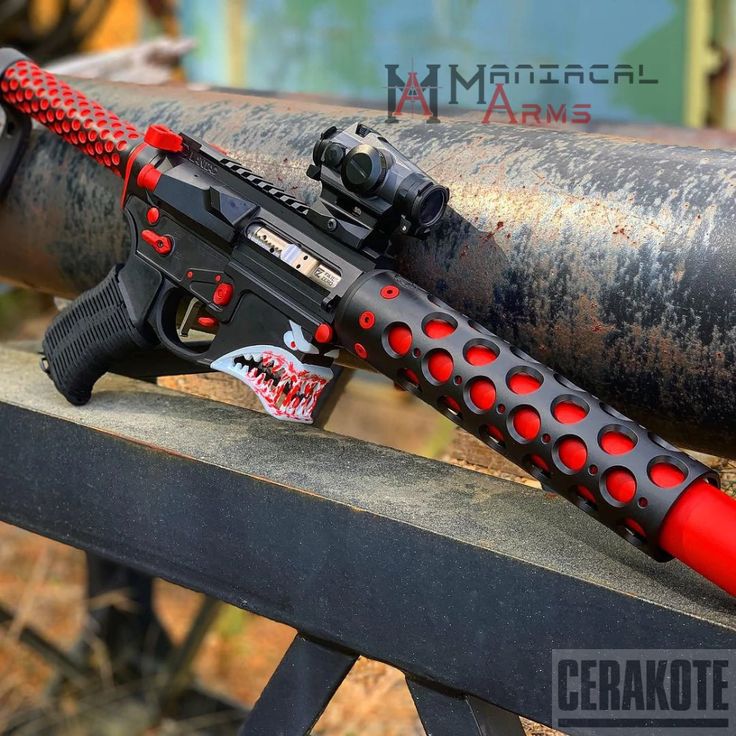DIY Car Painting: A Step‑by‑Step Guide to Prep, Spray, and Finish at Home
Overview: What It Takes to Paint a Car Yourself
Painting a car at home is achievable with careful prep, the right tools, and a clean workspace. You can refinish panels or complete a full respray by following a structured process: select a safe area, disassemble trim, repair and sand, mask, prime, apply base and clear, then cut and polish. Industry guides emphasize thorough surface prep, proper masking, and controlled gun technique for consistent coverage and gloss [1] [4] .
Plan Your Space, Tools, and Safety
Choose a clean, well‑ventilated area with minimal dust and a way to exhaust fumes safely. Many DIYers use a garage with filtered intake and an exhaust fan, keeping airflow directed away from the vehicle to reduce overspray landing back on the finish. Video walk‑throughs show working from the back toward the exhaust path to help manage overspray patterns during sealer, base, and clear applications [3] . Must‑have tools typically include an orbital sander, a compressor that can sustain your spray gun’s CFM, a quality HVLP gun (one for primer and one good gun that can handle base and clear), masking supplies, solvent wipes, and PPE such as a proper respirator, gloves, and eye protection [1] . Practically, many DIY painters keep base/clear gun pressures in the 23-25 psi range at the gun with the trigger pulled, adjusting for pattern and product requirements; tutorials show dialing in pattern shape and overlap consistency before moving to the body panels [3] . Always follow your paint system’s technical data sheets for exact requirements.
Disassembly and Surface Inspection
Remove trim, badges, lights, mirrors, and weatherstrips where feasible to avoid hard tape lines and gain clean access to edges and seams. Many step‑by‑step guides demonstrate pre‑painting prep with thorough solvent cleaning, followed by tack cloth use to lift lint and remaining dust before spraying cut‑ins and jambs [2] . Inspect for old bodywork, cracks, rust, and previous paint failures. Addressing these before sanding ensures your new finish bonds well and remains durable [4] .
Bodywork and Filler: Getting Panels Straight
If dents or waves are present, perform metal straightening and use body filler as needed. A proven process is to mix filler per label directions, spread in long, smooth strokes to achieve near‑final contour, let it cure, then shape with sharp abrasives. Change sanding discs often; dull abrasives tend to follow high spots and can leave ripples, while sharp discs cut highs and help flatten panels. Advanced how‑tos stress cleanliness during mixing to prevent hardened flakes contaminating future applications, and they detail grit progression starting near 80‑grit for rough shaping before moving to finer grits in the priming stage [4] . This step may take time, but straight panels dramatically improve the final gloss and reflection quality.
Sanding Strategy and Rust Treatment
Uniform sanding creates mechanical tooth and removes failing layers. Depending on your starting point, you may scuff existing clear for a blend or strip to bare metal in severe cases. Practical primers stress that sanding is essential for adhesion, with options ranging from hand sanding to DA/orbital machines, and grit selection based on task: coarser for shaping and finer for pre‑paint scuffing. When necessary, sanding to bare metal and addressing corrosion can deliver a longer‑lasting refinish. Rust spots should be cleaned to sound metal; severe corrosion may require cut‑and‑weld, while minor areas can be treated and sealed before primer [1] [5] .
Masking, Cleaning, and Tack‑Off
Quality masking avoids blow‑through and hard edges. Techniques include taping back into pinch welds and seams to minimize tape lines and prevent overspray build‑up. Before spraying, wipe down with pre‑paint cleaner and follow with a tack rag to remove lint and dust. Demonstrations show focusing first on jambs and edges, allowing some color to float onto adjacent areas that will later be fully covered when the vehicle is assembled for body spraying [2] . Keep clean gloves and dedicated wipe cloths on hand to reduce contamination.
Primer Selection and Application
Choose primer based on substrate and repair depth. Common options include epoxy (corrosion resistance and adhesion to bare metal), etching (acid‑based for bite on metal), and high‑build surfacer (fills sanding scratches and minor lows). Many DIY guides list all three as part of a complete toolkit for varied scenarios. Apply primer per the product’s flash and recoat schedules, then block sand to refine panels. After priming, re‑sanding with appropriate grits helps eliminate scratches and sets the stage for a smooth basecoat [1] [5] . Use guide coat during block sanding to reveal highs and lows and continue until panels read flat under reflections.
Basecoat and Clearcoat: Technique and Overlap
Once sealed, spray basecoat with consistent distance, speed, and overlap. Tutorials advise about 75% overlap for even coverage, emphasizing that staying consistent is harder than it looks; practice on test panels first. Many systems recommend one light coat of sealer and multiple medium coats of base until coverage, followed by clear in controlled, wet coats. DIY videos show working panel‑by‑panel, maintaining gun distance, and walking the length of large panels for uniform metallic lay and gloss. They also discuss typical DIY gun pressures near the mid‑20s psi for base/clear and the value of owning one good gun for base and clear and a separate primer gun to preserve tip life and reduce cross‑contamination [3] . Step‑by‑step demos include spraying jambs and cut‑ins, letting color drift onto the body, then reassembling before full‑body coats to control edges and improve final alignment [2] .
Flash Times, Curing, and Reassembly
Respect flash times between coats to reduce solvent entrapment and mottling, especially on metallics. After base, apply clear per recommended coat count and flash intervals. Some DIY sequences allow base and clear to harden for a day or two before sanding any overspray and proceeding to final coats or cut and polish. One example shows letting paint harden for roughly two days before panel reassembly and moving on to the next spray stage, which can help prevent imprinting and handling marks on fresh coatings [2] . Always follow your specific product data sheets for accurate timing.
Finishing: Color Sanding and Polishing
After full cure, many finishes benefit from refinement. Light orange peel, dust nibs, or minor texture can be leveled with wet sanding (for example 1500-3000 grit) and machine polishing to a uniform gloss. Tutorials demonstrate buzzing the car with 600 grit to address overspray before subsequent stages and using gray scuff pads for tight areas, illustrating how disciplined sanding leads to smoother final results [2] . Work cautiously on edges to avoid cutting through the clear.

Source: diypaintingtips.com
Troubleshooting Common Issues
Orange peel often relates to gun setup, viscosity, or distance; adjust fluid flow, fan pattern, and pressure, and maintain steady speed. Dry spray can stem from too much distance or airflow; slow slightly and reduce distance to let coats flow. Runs and sags may require gentle leveling after cure; shave and sand carefully, then repolish. Dust nibs are minimized with better tack‑off and airflow control. Uneven metallic lay frequently improves with consistent walking passes and overlap technique, as highlighted in hands‑on guides [3] .
Budgeting, Alternatives, and When to Get Help
Costs vary depending on paint system, tools, and consumables. While DIY can save labor costs, materials, safety gear, and equipment still add up. You might start with a single‑stage urethane for simpler application or choose base/clear for better UV resistance and repairability. Practice panels, fender tests, or painting a small part first can build confidence before tackling a whole body shell. If you lack ventilation or need color‑critical matching, consider a professional spray session for final coats after you complete prep. Step‑by‑step resources from established brands and publications can guide each phase with checklists and visual examples [1] [4] [5] .
Step‑by‑Step Quick Start
- Select a ventilated, clean workspace; set up intake filtration and safe exhaust, and stage PPE and fire safety gear. Practice gun patterns on a test panel first [3] .
- Disassemble trim and lights. Degrease panels, inspect for damage, and plan repairs. Pre‑paint wipes and tack cloths help reduce contaminants [2] .
- Perform bodywork: straighten metal, apply filler correctly, and sand with sharp abrasives to avoid ripples. Re‑mix and clean tools between applications [4] .
- Sand uniformly to create mechanical tooth; address rust down to sound metal. Decide whether to scuff existing paint or go to bare metal for long‑term durability [5] .
- Mask thoroughly, including hidden seams, to prevent hard lines. Clean with solvent and tack off immediately before spraying [2] .
- Prime with the appropriate system (epoxy/etch/surfacer). Block sand with guide coat until panels read flat and smooth [1] .
- Spray base with consistent distance and 75% overlap; apply clear per product specs. Maintain mid‑20s psi at the gun for many setups, adjusting as required [3] .
- Respect flash and cure times. Reassemble carefully to avoid marring fresh coatings; some workflows allow 1-2 days before handling for safer assembly [2] .
- Finish by wet sanding defects and polishing to final gloss, taking care at edges and body lines [2] .
Pro Tips for First‑Time DIY Painters
- Test panels: Dial in gun pattern, material flow, and overlap before touching the vehicle [3] .
- Cleanliness: Degrease and tack between stages to reduce fisheyes and dust nibs [2] .
- Grit discipline: Use sharp abrasives and change discs often to keep panels flat [4] .
- Primer choice: Match epoxy/etch/surfacer to the substrate and repair depth for best adhesion and fill [1] .
- Air management: Keep a steady spray distance, aim for smooth, wet coats without runs, and maintain airflow direction to carry overspray away from the work [3] .
References
[1] Red Label Abrasives (2022). How To Paint A Car: Steps, Supplies, & Tips.
[2] Eastwood (2023). STEP-BY-STEP GUIDE: How to Paint a Car at Home.
[3] MotoMind (2023). Beginner’s Guide to Paint Your Car with No Booth.
[4] Grassroots Motorsports (2019). Painting a Car at Home Part 1: Preparation.

Source: theplayfulparent.org
[5] Liquid Concepts (2023). The Process of Painting a Vehicle.


